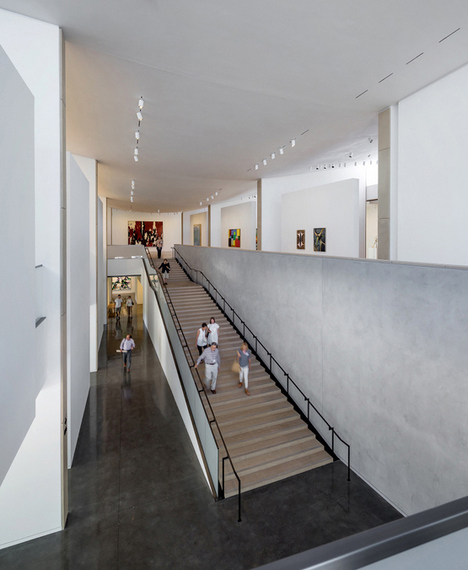
Visiting the newly-opened Anderson Collection at Stanford requires taking everything -- your body and your expectations -- up a level. After entering the building's main lobby -- which will cost you nothing as the Anderson is free -- you will ascend a grand staircase that plateaus at the building's collection floor. Upon arrival, prepare to be confronted by the imposing red, black and ivory crags of Clyfford Still's monumental 1957-J No. 1 (PH-142). Still's uncompromising masterpiece sets the tone and sends a message: "You have reached the top of the art mountain."
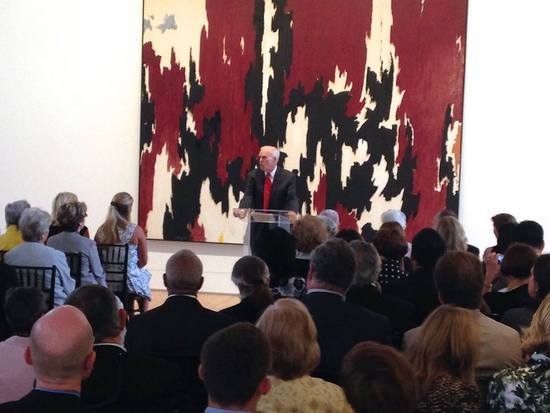
Stanford President John Hennessy speaks at the Anderson Collection Dedication: Photo © John Seed
Speaking at the building's dedication on September 18, Stanford's President John Hennessy praised the Anderson's gift of 121 works by 86 artists as a "gift for the generations" and also noted with great pride that the Anderson would play a key role in the remarkable and ongoing "Stanford Arts Initiative." If you think Stanford is just a tech-incubator with a football stadium, think again: the opening of the Anderson makes the Stanford campus a genuine arts destination. "Overnight," says Christopher Knight of the LA Times, "the Anderson Collection catapults Stanford into the top tier of American university museum art collections." Knight has that right, but I don't agree with his assessment of the Richard Olcott designed building which he dinged as "rather dull."
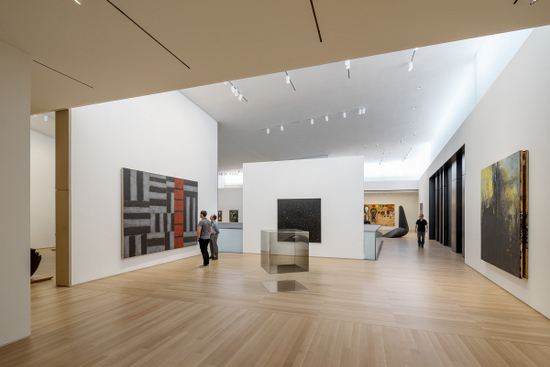
I found the second floor galleries -- lit from above by a rim of semi-transparent clerestory windows -- serenely perfect. The Anderson Collection building is spacious, elegant and perfectly in tune with the collection it houses. One of the effects of the flowing "open room" gallery layout is that it creates a sense of egalitarianism that encourages each visitor to experience both individual works and groupings in their own way. In other words, the Andersons may have collected and donated the art, but each visitor is made to feel like the collection is their own: the sense of sharing is profound. As I ambled through the galleries I could almost hear Hunk and Moo asking me: "What do you think?"
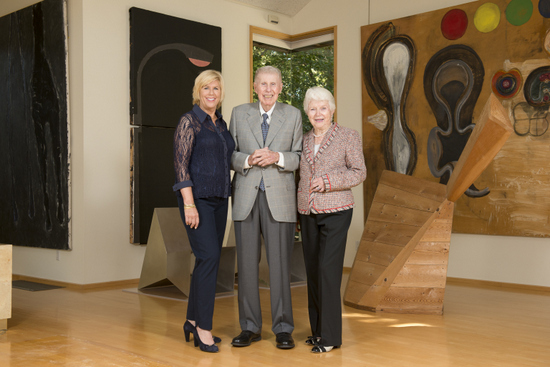
A great deal has been written about some of the collection's most precious works, and standing between Pollock's Lucifer and Mark Rothko's Pink and White Over Red is pretty cool, but what I came to see were the Bay Area paintings. A painter friend who doesn't quite share my taste once called me "one of those David Park people," and frankly I took that as a compliment.
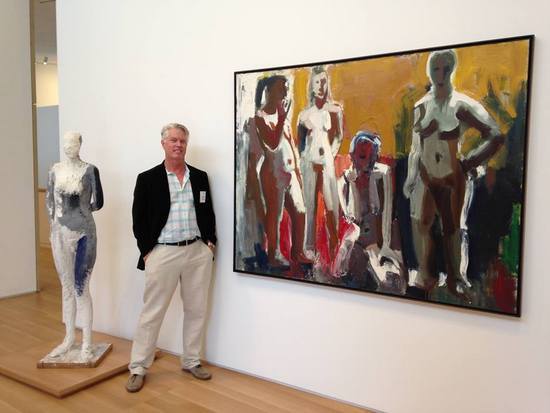
I think that one of the most valuable things that the Anderson Collection is going to do over time is to create a conversation between postwar art from both coasts. Along with Pollock, De Kooning and Rothko there are three Diebenkorns, three Oliveiras, two terrific Paul Wonners and a great David Park. Elmer Bischoff and Joan Brown are conspicuously absent, but you can see their work -- and two more fine Diebenkorn canvases -- at the Cantor Arts Center next door. Add to that two Lobdell abstractions, terrific paintings by Christopher Brown and Squeak Carnwath and you will have some idea of how strong the presence of California painting is at the Anderson Collection. The reputation of California art is going to be lifted up by this great public display.
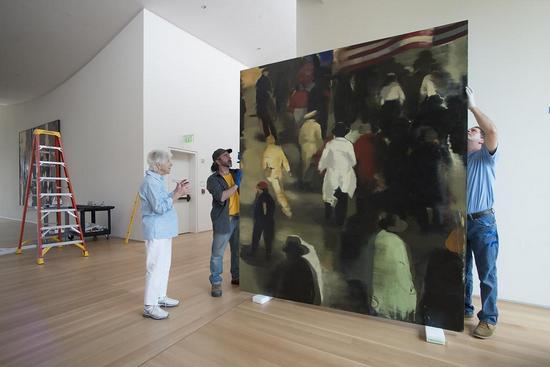
There is so much to be said about what the gift of this collection will mean for Stanford, for California art and for the public, but I am going to keep it brief here and make just one more point:
This collection was put together by a family that has a genuine passion for art.
You can see it in the photo of Moo above as she showed up in her sneakers to watch a work being installed, and you could hear it in the remarks that Hunk made to a crowd of donors on September 19th. Apparently he cut himself a few years ago while assisting with the assembly of a large Frank Stella relief. Hunk got a nice laugh from the crowd when he mused that he may have left a little bit of blood behind on the piece. "It is really a Stella/Anderson work now" he quipped. I'm not so sure about that, but I doubt I will ever meet a family who have put more of themselves on the line for the love of art.
Visiting the Anderson Collection:
Admission is free and advance tickets are not required for entry. Reserved timed tickets may be needed for some weekends: consult the Anderson Collection website for more information.
Hours:
Wednesday - Monday 11 am - 5 pm
Thursday 11 am - 8 pm
Tuesday Closed